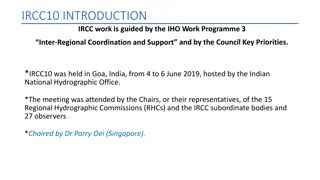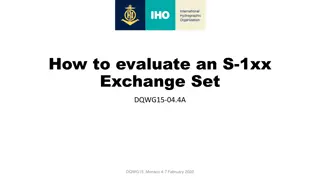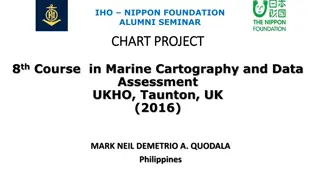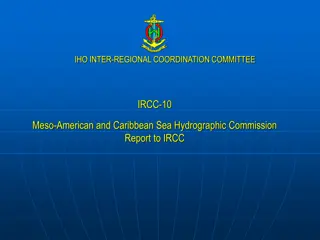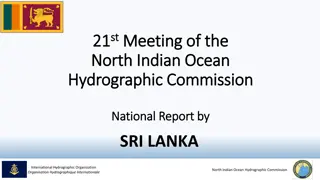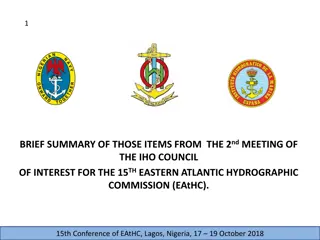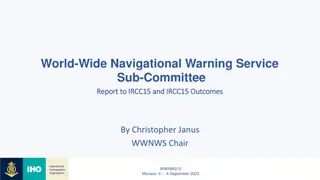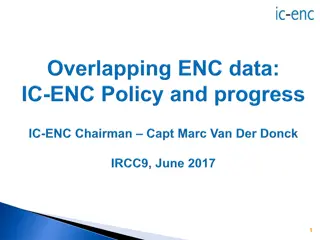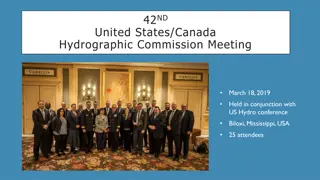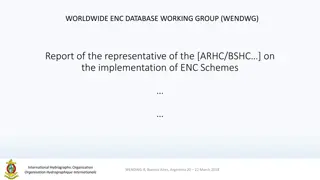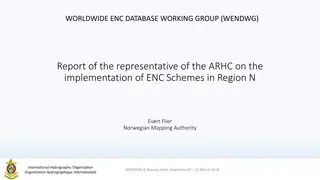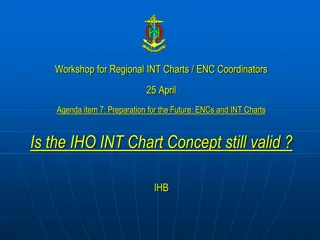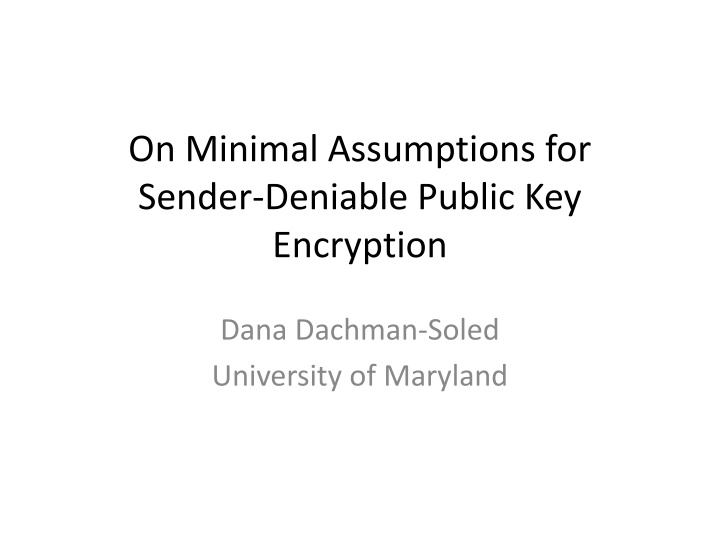
Minimal Assumptions for Sender-Deniable Public Key Encryption
Explore the minimal assumptions required for sender-deniable public key encryption, delving into concepts like sender-deniable encryption, simulatable public key encryption, and the challenges of achieving deniability in cryptographic schemes from standard assumptions to non-black-box techniques.
Download Presentation

Please find below an Image/Link to download the presentation.
The content on the website is provided AS IS for your information and personal use only. It may not be sold, licensed, or shared on other websites without obtaining consent from the author. If you encounter any issues during the download, it is possible that the publisher has removed the file from their server.
You are allowed to download the files provided on this website for personal or commercial use, subject to the condition that they are used lawfully. All files are the property of their respective owners.
The content on the website is provided AS IS for your information and personal use only. It may not be sold, licensed, or shared on other websites without obtaining consent from the author.
E N D
Presentation Transcript
On Minimal Assumptions for Sender-Deniable Public Key Encryption Dana Dachman-Soled University of Maryland
Deniable Public Key Encryption [Canetti, Dwork, Naor, Ostrovsky, 97] ?? ? = ?????(?;?) Sender Receiver s? Outputs: ?????? = ? For any ? in the message space, can produce a fake opening (? ,?? ) explaining the transcript as an encryption of ? .
Sender-Deniable Public Key Encryption [Canetti, Dwork, Naor, Ostrovsky, 97] ?? ? = ?????(?;?) Sender Receiver s? Outputs: ?????? = ? Applications: For any ? in the message space, can produce a fake opening ? explaining the transcript as an encryption of ? . Encryption Adaptive security Analogous definition for Receiver-Deniable Public Key After the fact incoercibility
What is known? Receiver-Deniable PKE and thus Deniable PKE is impossible [Bendlin, Nielsen, Nordholt, Orlandi, 11]. Sender-Deniable encryption with weak security from standard assumptions [Canetti, Dwork, Naor, Ostrovsky, 97]. Bi-Deniable encryption in the multi-distributional model constructed by [O Neill, Peikert, Waters, 11] [Sahai, Waters 14] achieve Sender-Deniable public key encryption from indistinguishability obfuscation (IO). Non-black box use of underlying primitives. Requires strong assumptions (FHE + multilinear maps).
Our Goal Understand minimal assumptions necessary for sender-deniable public key encryption. Necessity of non-black-box techniques. Is there a black-box construction of sender- deniable public key encryption from simulatable public key encryption?
Underlying primitive we consider Simulatable Public Key Encryption Algorithms (????,????),(????,????) (? ?, pk) (??,pk) s.t. ??? ?? = ?? ? ?= ???? ?? (??,? s.t. ??? ??,?? = ? ? ?= ???? ??,? s.t. ???? ?? = ?? Oblivious ?,?) (??,??,?) s.t. ???? ??,?? = ? Why this primitive? Simulatable PKE is sufficient for related primitives: Bi-deniable encryption in the multi-distributional model [OPW11] Intuition: Can generate a public key/ciphertext honestly and claim that it was generated obliviously. 1/poly-secure sender-deniable encryption [CDNO97] Non-committing encryption [CFGN96].
Weak Sender-Deniable PKEfrom Simulatable PKE Simplification of [CDNO97] construction: . . . ???(0?) Obliv. ???(0?) Obliv. ???(0?) Obliv Obliv Obliv Obliv k ciphertexts To encrypt a 0, set odd number of ciphertexts to oblivious. To encrypt a 1, set an even number of ciphertexts to oblivious. To deny, lie and say that an honestly generated ciphertext was generated obliviously. Polynomial security: Real and Fake openings can be distinguished with 1/poly advantage Super-polynomial security: Real and Fake openings can only be distinguished with Problem: Cannot lie and claim that an obliviously generated ciphertext was generated non-obliviously. Only achieves O(k) security, where k is the number of queries made by encryption. negligible advantage
Our Results Theorem: There is no black-box construction of sender-deniable public key encryption with super-polynomial security from simulatable public key encryption. More specifically: Every black-box construction of a sender- deniable PKE scheme from simulatable PKE which makes ? queries to the simulatable PKE cannot achieve security better than O(?4). Nearly tight with [CDNO97] construction.
Some Proof Intuition Oracle separation: Oracle relative to which Simulatable PKE exists, Sender-Deniable PKE does not exist. Our oracle: Important: random string is unlikely to be in the range of ? or ? ??, . ?: 0,1? 0,13? takes inputs ?? and outputs ??. ?: 0,14? 0,112? takes inputs (??,?) and outputs ?. ? 1: 0,113? 0,1? takes inputs (??,? )and returns ? if ?(??) = ?? and ?(??,?) = ? and otherwise. Simulatable PKE relative to oracle: First ? bits of input x is plaintext. Public keys and ciphertexts are indistinguishable from random strings: ????(??),????(??) output ??,??. ????(??),????(??,?) output ?? and ? itself.
Some Proof Intuition Impossibility of Sender-Deniable Encryption: In a super-polynomially-secure scheme, should be able to run deny an unbounded polynomial ? number of times and have that: ?0,? = ??????;?0 original randomness ?1= ???????0,1 ? ,? looks fresh (?2= ???????1,? ,?) looks fresh . . . (??= ???????? 1,1 ? ,?) looks fresh In the oracle case: We consider sequences of Sender views ?????0,?????1, ,??????. Each view contains the input bit, random tape, oracle queries + responses.
Some Proof Intuition Correctness of encryption guarantees: If Sender s view is an encryption of a bit b, then Receiver s view sampled conditioned on Sender s view will be a decryption of the same bit b w.h.p. ?????| ????? Using [Impagliazzo, Rudich, 89]-type techniques: ? can use Eve algorithm to find set ? of likely intersection queries between ? and ?: ????? ?????,? ???????,?,? Note that (??,?) are fixed. The only way to change the distribution of ?????| ?????, ? is to change the set ?. Distribution must change in each iteration. ? is the set of likely intersection queries between ?,? given ? s view.
A First Attempt Consider the set ?0 generated by ? from its real ?????0. Let ?? be the set corresponding to fake ??????. Claim : Q? ?0 Therefore, in order to change distribution over Receiver s view, queries must be removed each time. There are at most poly number of queries in real ?0so deny can be run at most a polynomial number of times before it fails. So cannot get super-polynomial security. Claim : Intuitively, this is what happens in [CDNO97] construction.
Problem Claim is false! It is possible that ?? ?0 . Toy Example: 12n encryptions To encrypt a 0: ?(??,0?) ?(??,0?) ?(??,0?) ?(??,0?) To encrypt a 1: Compute ? = ?(??,? ); Say ? = 01...10, length 12? bits. ?(??,0?) ?(??,0?) Obliv Obliv Decrypt: Decrypt 12n ciphertexts. If they all output 0?, output 0. Otherwise, compute ? and decrypt to get ? . Output 1. In 1 case, intersection queries will contain ? . Note: In 0 case, intersection queries will consist of 0?;??.
Problem Claim is false! It is possible ?? ?0 . Toy Example: Can claim an encryption of 0 is an encryption of 1: In the process will add an arbitrary query to set of intersection queries. ?(??,0?) ?(??,0?) ?(??,0?) ?(??,0?) Compute ? = ?(??,? ); Say ? = 01...10 ?(??,0?) ?(??,0?) Obliv Obliv Note: Intersection queries now include, ? .
Some Proof Intuition Main technical part of proof is to deal with the case that ?? ?0 . Use an information compression argument to show that w.h.p. over choice of oracle, we cannot have a sequence of openings with too many new queries.
Some Proof Intuition Since Eve makes a polynomial number of queries: Can encode a sequence of openings with a short string. So total possible number of encodings is small. Intuition: To encode a query ? ??, use its index in the Eve algorithm. For a fixed encoding, probability randomly chosen oracle is consistent with the encoded sequence of openings is small. Follows from property of oracle that a random string is unlikely to be in image of ?(??, ). Since number of encodings is small, prob. a randomly chosen oracle is consistent with any sequence is small.
Open Problems Extend impossibility result to trapdoor permutations. Extend impossibility results to multiple round encryption schemes. Construct sender-deniable public key encryption without relying on IO?


